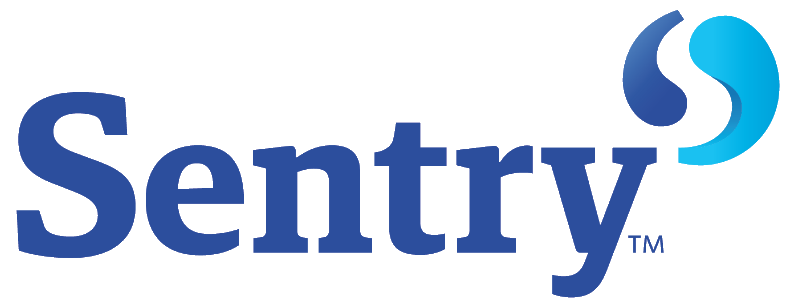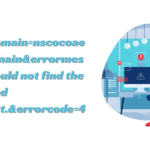Best Tools and Resources for Mobile App Developers in 2024
- 1 Best Tools and Resources for Mobile App Developers
- 1.1 1. Cross-Platform Development Tools
- 1.1.1 a. Flutter
- 1.1.2 b. React Native
- 1.2 2. Backend as a Service (BaaS) Platforms
- 1.2.1 Firebase
- 1.2.2 AWS Amplify
- 1.3 3. Design and Prototyping Tools
- 1.4 4. Application Performance Monitoring (APM) Tools
- 1.5 5. Testing and Debugging Tools
- 1.6 6. Project Management and Collaboration Tools
- 1.7 7. Version Control Systems
- 2 Conclusion
Mobile app development is evolving rapidly, with 2024 becoming another year of significant advancements. Developers need potent tools, platforms, and resources that will help streamline the development process and keep them competitive in an ever-changing industry. Whether you’re part of a mobile app development company Toronto or an emerging mobile app development company in Florida, leveraging the right tools is crucial for success.
This blog explores the best tools and resources to shape mobile app development 2024, focusing on cross-platform solutions, efficient design resources, and the latest frameworks to speed up deployment and testing.
Best Tools and Resources for Mobile App Developers
1. Cross-Platform Development Tools
As businesses prioritize mobile-first strategies, cross-platform development tools are becoming indispensable. These tools allow developers to write code once and deploy it across multiple platforms like iOS and Android, significantly reducing time and costs.
a. Flutter

Flutter remains one of the most popular tools for cross-platform development in 2024. Its extensive widget library and native performance ensure a smooth user experience across iOS, Android, and web platforms. Flutter’s hot reload feature speeds up development time by allowing developers to view code changes instantly.
For developers in leading mobile app development company Toronto or mobile app development company Florida, Flutter offers the flexibility to cater to clients in diverse industries, making it an ideal tool for crafting customized, high-performance apps.
b. React Native

React Native continues to evolve with better support for web and desktop applications. Developed by Facebook, React Native allows developers to use JavaScript to build applications with a native look and feel. With its large community and array of ready-to-use components, React Native remains an excellent choice for building robust mobile apps in 2024.
For both seasoned and up-and-coming developers, especially those in mobile app development company Florida, React Native’s scalability and integration with third-party plugins make it a powerful tool for creating highly dynamic apps.
2. Backend as a Service (BaaS) Platforms
Managing servers and databases can be complex and resource-intensive. Backend-as-a-service (BaaS) platforms handle the heavy lifting, allowing developers to focus on building great front-end experiences.
-
Firebase

Firebase, a Google-backed BaaS platform, provides developers with tools that include real-time databases, authentication, and cloud storage. Firebase is mainly known for its real-time data sync across platforms, allowing for seamless integration of live features like chat, notifications, and real-time collaboration.
In 2024, Firebase remains a go-to backend service for mobile app development company Toronto and mobile app development company Florida, looking to enhance app scalability, reliability, and performance without having to manage infrastructure.
-
AWS Amplify

AWS Amplify is another major player in the BaaS ecosystem, offering cloud-based services such as hosting, authentication, machine learning integration, and APIs. Amplify supports popular frameworks like React Native, Flutter, and Ionic, providing flexibility and ease of integration.
As mobile app developers continue to work on more complex projects, AWS Amplify’s extensive suite of tools can significantly reduce development time and enhance app security.
3. Design and Prototyping Tools
The importance of intuitive, visually appealing design cannot be overstated. Mobile app design tools help developers and designers collaborate to create wireframes, mockups, and prototypes before the actual coding begins.
-
Figma

Figma’s cloud-based design platform allows teams to collaborate on real-time design projects. With features like vector editing, prototyping, and design system management, Figma is an indispensable tool for creating visually compelling and user-friendly interfaces. Collaborating in real-time makes it especially useful for teams across different time zones or regions.
Whether you’re working with a mobile app development company in Toronto or a mobile app development company in Florida, Figma is a powerful tool for streamlining design workflows and ensuring consistency across projects.
-
Adobe XD
![]()
Adobe XD is another robust design tool enabling developers to create prototypes, wireframes, and user interfaces quickly. With its integration with other Adobe Creative Cloud tools like Photoshop and Illustrator, Adobe XD allows for seamless transitions between different stages of the design process.
In 2024, Adobe XD continues to be favoured by developers for its rich design capabilities and the ability to create high-fidelity prototypes that closely resemble the final product.
4. Application Performance Monitoring (APM) Tools
Performance monitoring tools have become essential in an era where user experience is critical to app success. These tools help developers identify and fix performance issues, ensuring smooth and efficient app operation.
-
New Relic

New Relic provides developers with detailed insights into app performance, tracking metrics such as server response time, CPU usage, and database queries. Its integration with multiple platforms makes it an excellent choice for developers working with large-scale projects.
A mobile app development company in Toronto looking to ensure their applications operate smoothly can use New Relic to monitor performance and make real-time adjustments.
-
Sentry

Sentry is another excellent tool for monitoring errors and crashes in mobile applications. It provides real-time insights into code issues, helping developers pinpoint and fix bugs quickly. Sentry integrates with various frameworks, including React Native and Flutter, making it versatile for iOS and Android development.
Sentry’s ability to catch errors early is invaluable for mobile app development company Florida developers who must maintain high-quality app performance.
5. Testing and Debugging Tools
Testing is a crucial step in the mobile app development process. Automated testing tools save time and improve app reliability by identifying bugs before an app reaches production.
-
Appium

Appium remains a top choice for automating mobile app testing in 2024. It supports multiple platforms and languages as an open-source tool, making it versatile for various mobile applications. Appium enables developers to test native, hybrid, and mobile web apps without requiring code modifications, streamlining the testing process.
-
TestFairy

TestFairy offers developers detailed reports on how apps behave in real-world environments. By providing insights into user behaviour, battery consumption, and network performance, TestFairy ensures that apps are tested under realistic conditions. It integrates with popular project management tools like Jira, making it easy to track bugs and fixes.
6. Project Management and Collaboration Tools
Project management and collaboration tools are vital in keeping development teams organized, especially when working with clients across different geographical regions.
-
Trello

Trello is a simple yet effective tool for managing tasks and tracking progress. Teams can visually organize projects and assign tasks using boards, lists, and cards, ensuring meeting deadlines.
For teams working across a mobile app development company in Toronto or a mobile app development company in Florida, Trello offers transparency and clarity in project management, keeping everyone aligned.
-
Jira

Jira is another popular tool used for agile project management, allowing developers to track issues, bugs, and project progress. Jira’s customizable workflows make it highly adaptable for different projects, from software development to testing.
With integrations into other development tools like GitHub and Bitbucket, Jira is a comprehensive project management tool that can help streamline app development workflows in 2024.
7. Version Control Systems
Version control systems are essential for managing code changes, primarily when multiple developers work on the same project.
-
GitHub

GitHub continues to be a cornerstone of version control in 2024, allowing developers to collaborate on projects efficiently. With its extensive open-source code library, GitHub is a valuable resource for developers looking to find solutions, share code, and contribute to community projects.
Both a mobile app development company in Toronto and a mobile app development company in Florida can benefit from using GitHub’s vast community resources to streamline their workflows.
-
GitLab

While similar to GitHub, GitLab provides additional functionality for DevOps, enabling continuous integration and deployment. GitLab’s built-in CI/CD pipelines automate much of the deployment process, reducing errors and speeding up time to market.
GitLab is perfect for teams looking to integrate development, testing, and deployment under one roof.
Conclusion
As mobile app development evolves, staying updated with the best tools and resources is crucial for success. Whether you’re part of a mobile app development company in Toronto or a mobile app development company in Florida, using these tools will help you stay competitive and meet the demands of clients across industries.
From cross-platform development frameworks like Flutter and React Native to cloud-based backend services like Firebase and AWS Amplify, 2024 offers a range of solutions designed to streamline workflows, enhance app performance, and reduce development time.
By leveraging the latest design, performance monitoring, testing, and collaboration tools, mobile app developers can create high-quality, user-friendly apps that meet the growing expectations of users in 2024 and beyond.
Make sure to integrate these tools into your development processes and take full advantage of the resources available to ensure the success of your projects.

















